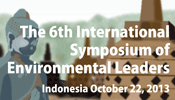Fieldwork in Kitakyushu
December 6-8, 2012
From 6-8 December, we organised a fieldwork visit to Fukuoka Prefecture. 13 Masters and Doctorate students took part in visits to Fukuoka and Kitakyushu water departments, Kitakyushu next generation energy development, and also made research presentations to Kitakyushu City University. On the final day, we visited the Dazaifu-Tenman-gu Shrine dedicated to the God of scholarship and learning, which was an excellent chance for overseas students to appreciate aspects of Japanese culture.
Student’s Report:Jingru DU (D1)
◆ Fukuoka Waterworks Bureau
◆ Kitakyushu water and sewer commission
On the first day, we visited Fukuoka Waterworks Bureau and Kitakyushu Water and Sewerage Commission in Fukuoka Prefecture. The demand for water in urban areas in Fukuoka, which has scarce water resources, continues to increase year by year due to population centralization and improvements in the quality of life. As we move further into the 21st century, the growth of Fukuoka’s urban areas continues to advance and consequently water demand shifts. Therefore, the most urgent task is to secure new water resources to meet this changing demand.
In response to these trends, Fukuoka prefecture has drawn up a long-term Fukuoka Wide Area Water Supply Improvement Project, including a sea water desalination project. The sea water desalination project in particular has been pursued in order to deal with high water demand and recurrent water shortages.
Sea water desalination involves the removal of salts and other impurities from sea water by using specific membrane processes or by vaporizing sea water to produce fresh water. One such membrane process is Reverse Osmosis, by which sea water, subjected to pressure, is forced against a semi-permeable membrane in a reverse osmosis membrane module, leaving the impurities behind, and providing fresh water.
A variety of membranes are used at the sea water desalination center. For instance, UF membranes can remove colloidal materials and viruses from raw water; high-pressure RO membranes can efficiently remove dissolved salts; low-pressure RO membranes are used to adjust the quality of feed water as it passes through several alternating layers of flat-sheet membrane, which have been rolled up.
We drank fresh water which was sourced from potable water and seawater desalination respectively. It was impressive that the seawater after treatment was nearly the same as the potable water.









